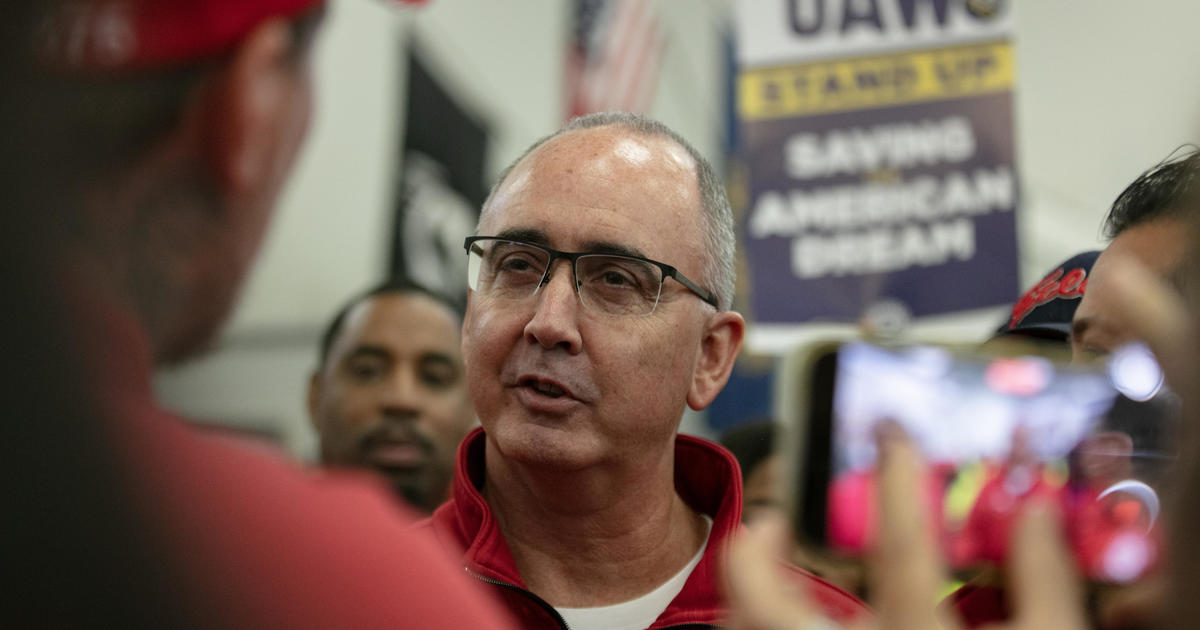Chrysler Group-NextEnergy V2G Project Probes Promise of Battery Power
AUBURN HILLS (WWJ) -- Chrysler Group has partnered with NextEnergy, the Detroit-based advanced energy technology accelerator, to evaluate vehicle-to-grid technology using four all-electric minivans.
If the EVs prove to be viable storehouses of electricity, they could provide energy savings by sending surplus power to the grid.
"This program is indicative of our broad-based approach to powertrain development," says Bob Lee, Chrysler group vice president and head of engine and electrified propulsion engineering. "Advanced internal-combustion technology remains at the core of our efforts, but the present regulatory climate we live in compels all auto makers to explore alternatives such as electrification. We're choosing to go the extra mile by also exploring how electric vehicles might mesh with our energy infrastructure."
The battery-powered minivans are connected to a charging module that, thanks to unique NextEnergy technology, can simulate any electrical grid in the world.
"This, when coupled with Chrysler Group's powertrain expertise, has enabled leading-edge business-model and technology demonstrations," said NextEnergy president and CEO Jean Redfield.
Among the scenarios under study is reduced reliance on "spinning reserves" -- the expensive practice of having huge generators at the ready to balance spikes in energy demand.
If EVs were linked together in sufficient numbers and their combined surplus power was sold to utility companies, they could conceivably offset demand surges. The expectation is that tapping such a reservoir would cut costs for utility companies, while also putting money into the pockets of EV owners.
Similarly, a mini-grid composed of EVs would enable "peak-shaving," which would see EV owners draw from their own power reserves during those hours when demand for electricity -- along with its price -- is highest.
The V2G project also considers the impact of cloudy days on solar-panel function. EVs could provide a ray of sunshine in the form of supplemental power, a process known as "generation-firming."
The two-year Chrysler-NextEnergy partnership launched in 2011 and has been gathering data from four Chrysler Town & Country minivans equipped with all-electric powertrains. Each is powered by a 24-kilowatt-hour battery modified to accommodate bidirectional charging.
In addition to studying vehicle design elements such as battery size, engineers are investigating how EVs with reverse power-flow might affect the nation's power grids, run by organizations called Independent System Operators (ISOs).
ISOs buy, sell and transmit electricity. Project engineers are collecting real-time pricing data from ISOs and weighing them against projected battery performance to help define revenue expectations.
Preliminary results show particular promise for ISOs that utilize solar and wind energy. Final results will be compiled later this year.
The project is funded with $1 million from the Michigan Economic Development Corp. and $400,000 from NextEnergy. Chrysler Group is supplying the vehicles and in-kind engineering support.
The project complements Chrysler Group's concerted efforts to develop clean-running, capable powertrains for today's motorists, such as the battery-electric system that powers the 2013 Fiat 500e. Since 2009, the company has invested nearly $2.2 billion in projects that benefit the production of advanced engines and transmissions -- more than 58 percent of its total investment in manufacturing.



